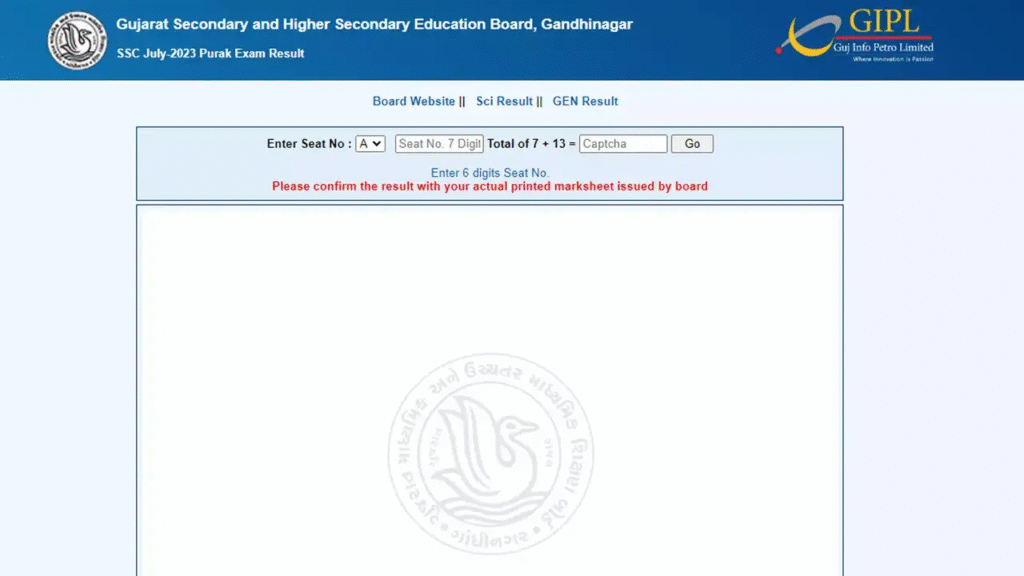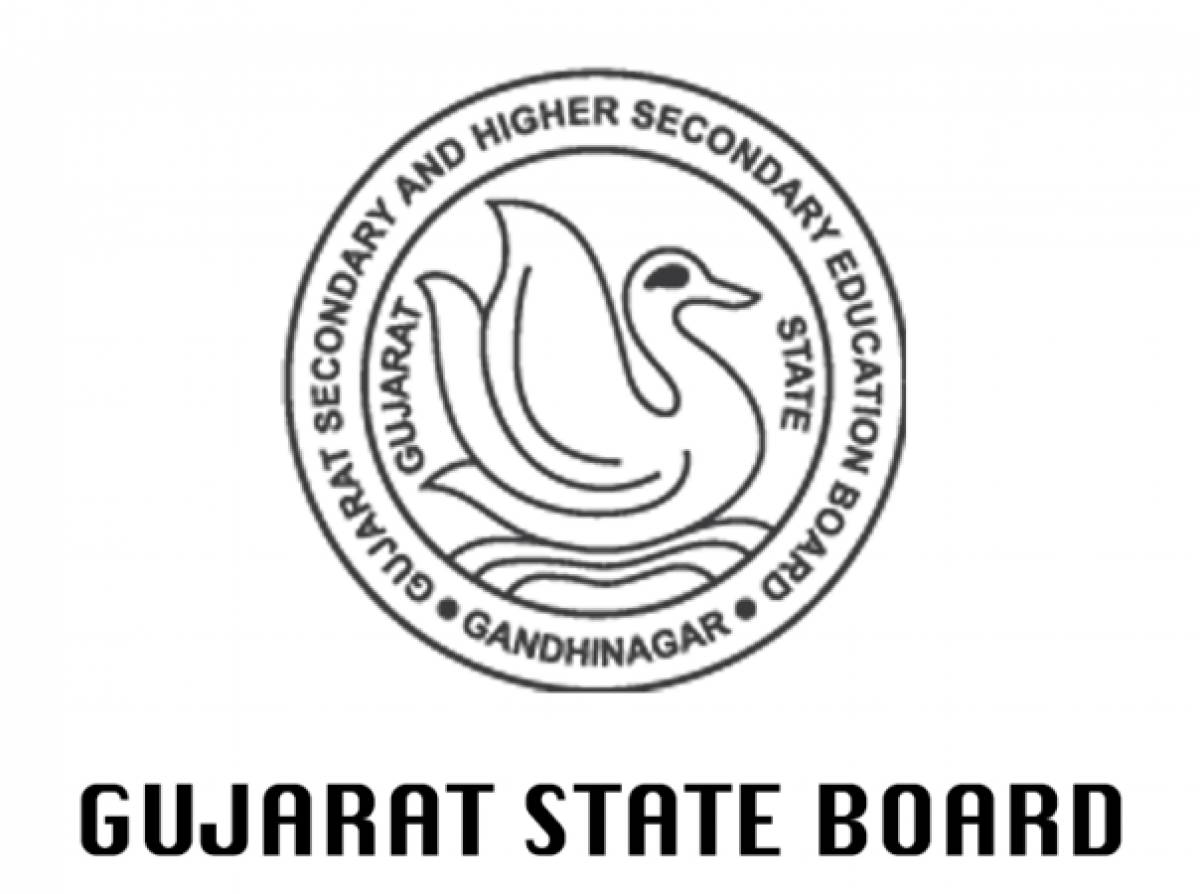
The Gujarat Secondary and Higher Secondary Education Board (GSEB) has officially declared the Class 10 SSC Result 2025, setting in motion a wave of emotion across lakhs of households in the state. Students, teachers, and families have waited anxiously over the past few weeks, and the release of these results marks both an end and a beginning—a culmination of effort and the start of new academic journeys. The announcement has been made available via the board’s official website, gseb.org, which has since seen overwhelming traffic as students rush to access their performance data.
This annual milestone is not just a routine update—it’s a pivotal chapter in the academic narrative of Gujarat. With every student’s score card comes a story of late-night study marathons, personal sacrifices, anxiety, and hope. This year, the GSEB SSC results carry more weight than usual due to changes in examination patterns, evolving academic expectations, and increased pressure surrounding competitive educational tracks.
A Closer Look at the Examination Cycle
The GSEB conducted the Class 10 SSC examinations between February 27 and March 10, 2025. These two weeks were critical not just for the students but also for the teachers and school administrators who ensured the process went on smoothly. Exam centers were spread across urban and rural areas of Gujarat, aiming to deliver a standardized testing environment to all.
Strict protocols were in place to prevent malpractices and ensure that every student had a fair opportunity. The board’s examiners were instructed to follow a rigorous marking scheme to maintain parity and ensure academic integrity. After weeks of assessment and data verification, the GSEB finalized and uploaded the results in the early hours of the morning, offering students a sense of closure—or in many cases, a gateway to the future.
Students React: Emotions Run High as Results Go Live
For most students, checking the SSC result is a high-stakes moment. At precisely 8:00 AM on May 7, the GSEB activated the result link on its portal. Within moments, traffic surged on the website as students flooded in. Some received immediate joy—a clear reflection of their hard work and commitment. For others, the experience was a mix of relief, confusion, or concern over slightly lower-than-expected scores.
Social media also became a space of shared emotion, with hashtags like #GSEBSSC2025, #GujaratBoardResults, and #Class10Success trending regionally. Some students posted screenshots of their scorecards, thanking their parents and teachers. Others expressed disappointment, but many encouraged each other by emphasizing the bigger picture—that a mark sheet doesn’t define one’s future.
The Digitalization of Result Access
What distinguishes the GSEB SSC Result 2025 from its previous iterations is the seamless integration of digital platforms. While gseb.org remains the primary source, students could also access results through SMS services, and even platforms like DigiLocker. The rise in digital literacy and mobile penetration across Gujarat allowed this transition to flourish, particularly in semi-urban and rural pockets where internet cafés or smartphones were previously a luxury.
The GSEB has been applauded for its coordination with the state IT infrastructure to avoid technical glitches, something that has plagued result announcements in other states in previous years. As a result, most students reported a smooth experience when downloading or viewing their results—either via the website or through their respective school portals.
Marks Distribution and Evaluation Patterns
This year’s Class 10 results reflect a more evolved evaluation model introduced by GSEB. The board’s moderation policy was slightly revised to reduce artificial inflation while still recognizing genuine effort. Reports from academic insiders suggest that the board aimed to curb excessively high scoring trends to bring more realism into the grading process.
Students were assessed in core subjects like Mathematics, Science, Social Science, English, Gujarati, and elective languages. The marking scheme this year followed a more application-based approach, where rote learning was discouraged and critical thinking was rewarded. The answer scripts went through multiple rounds of scrutiny, with rechecking protocols firmly in place before results were finalized.
Toppers and Regional Trends
While the board has not officially declared a merit list to prevent unhealthy competition, schools across the state have begun celebrating their individual toppers. Some districts, especially in Ahmedabad, Surat, and Rajkot, reported significantly higher average scores than previous years. Educational experts believe this is a result of better school infrastructure and increased access to online learning tools.
On the other hand, students from tribal belts and economically disadvantaged backgrounds also showed impressive performance, thanks to various government interventions like mid-day meal schemes, free coaching centers, and supplemental online lectures made available during the exam season.
A Wake-Up Call for the Underperforming
While many students passed with flying colors, a section failed to meet the minimum passing mark of 33% per subject. The board has announced that those students will be given an opportunity to reappear for supplementary exams. The dates for these supplementary exams will be released shortly.
For students who couldn’t pass, experts advise that the SSC failure is not the end. Rather, it is an opportunity for self-reflection and improvement. Psychological counseling cells have also been activated in schools to help students cope with post-result anxiety and to plan a constructive path forward.
The Supplementary Exam Route and What Lies Ahead

GSEB has reiterated that supplementary exams will be conducted in July 2025, giving students who couldn’t pass in one or more subjects a chance to make up for their shortcomings. This window is crucial, as it prevents students from losing an entire academic year. Schools will resume bridge courses in the coming weeks to help these students focus on key areas.
Meanwhile, the board is also preparing to make evaluation more transparent for those applying for revaluation or rechecking. The guidelines for these processes will be made available through district educational offices and on the official website soon.
Pathways After Class 10: What Students Are Planning
Now that the results are out, students must make vital decisions regarding their next academic steps. The transition from secondary to higher secondary education is where most students choose their career trajectories—whether it’s Science, Commerce, Arts, or vocational training.
Private schools have already started accepting pre-registrations for Class 11, and career counseling seminars are being scheduled across urban centers. Government schools are also stepping up their awareness campaigns to ensure students, especially from rural regions, make informed decisions.
An increasing number of students are also showing interest in skill-based learning programs, industrial training institutes (ITIs), and polytechnic courses, a shift that aligns with the Skill India Mission promoted by the central government.
Government and Parental Reactions
Government officials, including Gujarat’s Education Minister, congratulated students and appreciated the efforts of teachers and administrators. A statement from the Education Department emphasized that these results show a “positive upward trend in learning outcomes, with an increase in the number of first-division holders and a reduced failure rate.”
Parents, for their part, expressed a mix of relief and pride. Many were seen sharing sweets, organizing home pujas, or visiting local temples to offer prayers in gratitude. In joint families, where education is considered a social currency, the SSC result carries immense value. It’s often the first formal academic achievement recognized across generations.
The Road to National Competitiveness
With Gujarat improving its literacy and exam performance index, attention is now shifting to how these students will compete on a national scale. With examinations like NEET, JEE, CUET, and CLAT on the horizon, students from Gujarat are expected to increasingly participate in all-India entrance exams.
Many private coaching centers have announced scholarship programs for high-scoring SSC students, hoping to attract the state’s academic elite. Education analysts believe this year’s strong SSC turnout sets a solid foundation for a competitive academic environment going forward.
Media and Educational Experts Weigh In
Leading educational analysts have observed that the GSEB’s attempt to standardize question patterns, while introducing digital answer script evaluation, has led to more consistency in scoring. However, they also warned against placing undue pressure on students, especially as they transition into streams that require early specialization.
Regional news outlets hailed the smooth result process as a sign of Gujarat’s progressive educational policy. Many newspapers published detailed analysis of district-wise performance, gender ratio, and rural-urban divide.
Looking Beyond Marksheets
For many students, the marksheet is only one part of a broader story. Life skills, emotional intelligence, creativity, and perseverance are just as critical. NGOs and educational activists are encouraging schools to hold post-result sessions that focus on mental health, career guidance, and values-based education.
The GSEB, too, seems to be aware of this evolving discourse. There are plans to introduce new life skill modules from the next academic session, a move that will help bridge the gap between academic knowledge and real-world applications.
The Final Word: A Landmark Moment in Gujarat’s Education History
The declaration of the GSEB SSC Result 2025 is more than just an academic checkpoint—it is a moment of collective experience. For lakhs of students, the outcome reflects years of discipline and hard work. For families, it’s a measure of security, hope, and pride. For the state, it’s an indicator of how education policies are shaping young minds.
As Gujarat continues its pursuit of academic excellence, this year’s SSC results serve as a reminder of what’s possible when students, educators, policymakers, and parents work in tandem. The state has not only delivered results—it has delivered inspiration.

